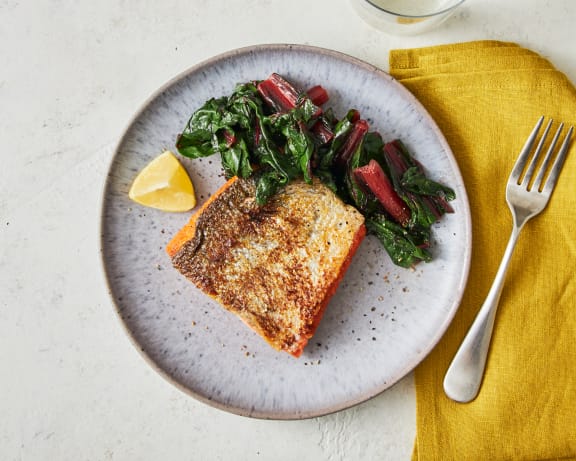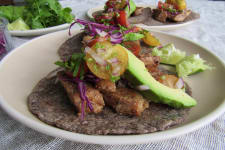Wild Alaskan sockeye salmon is always wild caught. Its fillets are a vibrant shade of red with a robust flavor that sings in all types of dishes. It's a variety of salmon for those among us who appreciate the bold and the beautiful, both in nature and in our home kitchens.
Otherwise known as red salmon, sockeye earned this colorful nickname because its flesh is a vibrant, saturated red. Its deep orange-red hue comes from a diet high in carotenoids. This distinctive color makes this variety of salmon one of the easiest fillets to identify when choosing what to cook for your next meal.
What Does Sockeye Salmon Taste Like?
Sockeye salmon is tender, but has a meaty bite. It has a bold salmon flavor that takes on a nuttiness or a sweetness, depending on how you cook it. It's often described as the most flavorful of salmon species, and therefore can take on intense flavors in cooking and stands up well to marinades, rubs, and sauces.
Is Sockeye Salmon Sustainable?
Sockeye salmon caught in Alaska is one of the most sustainable fish you can eat. Bristol Bay, home to the largest sockeye spawning ground, had the largest run of salmon in recorded history in 2022. When caught in Alaska, this species is strictly regulated according to the state constitution. The Alaska Department of Fish & Game keeps a close watch on the numbers of salmon season to season, and sets quotas for sport, commercial, and subsistence fishing to ensure healthy stock.
Wild Alaskan Company's salmon is always caught and processed right here in the USA.
Sockeye Salmon Nutrition Facts
Sockeye has the highest amount of vitamin D among Wild Alaskan Company’s offerings — over 100 percent of the USDA’s recommended daily intake in each serving!
Nutrition per 6-ounce serving:
-
Calories: 220 calories
-
Fat: 10 grams
-
Protein: 34 grams
-
Vitamin D: 24 micrograms, or 120% RDI
Is Sockeye Salmon Healthy?
Sockeye salmon is a lean protein, containing omega-3 fatty acids. It also contains a carotenoid antioxidant called astaxanthin that gives the fish its signature color.
Like all species of salmon, sockeye is low in mercury.
Where Does Sockeye Salmon Come From?
Sockeye salmon is a species commercially caught in Bristol Bay, Alaska Peninsula, Chignik, Prince William Sound, Yakutat, Cook Inlet, Kodiak, and Southeast Alaska.
Sockeye, like other wild salmon, take an epic journey from freshwater lakes and streams where they are born. They migrate out to the ocean to grow, feed and mature, and then return to their natal streams to spawn in adulthood.
Copper River Salmon or Sockeye Salmon?
Copper River Sockeye Salmon are named for their place of origin, the Copper River. They are known as the first salmon to come in the commercial season. Copper River itself is cold, long, and has a strong current, which gives sockeye from this run its unique qualities in taste and texture. In fact, each salmon run in any region in Alaska has its own unique qualities that reflect its entire life cycle.
What Is the Best Way to Cook Sockeye Salmon?
Wild sockeye salmon has a lower fat content than the typical fillet of farmed atlantic salmon, so if you cook it as long as you cook a farmed salmon fillet, it will come out tough and dry. To cook sockeye, you may need to adjust your timing and technique to ensure that the fillets stay moist and flaky.
If you’re just starting out on your seafood cooking journey, you might enjoy trying a low heat method to cook sockeye, like cooking fish en papillote. It’s also a great idea to check the doneness of the salmon with an instant-read thermometer.
Here are some step-by-step guides:
Sockeye Salmon Recipe Ideas
One of the best parts of sockeye salmon is its versatility. Over a salad, in a sandwich, as the star of a meal or even as a healthy, protein-packed snack, sockeye shines in color and flavor. Here are our five favorite wild salmon recipes that cook up perfectly with a fillet of sockeye.






